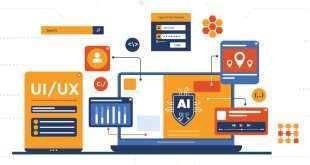In today’s fast-paced digital landscape, user experience has become paramount, and website responsiveness plays a crucial role in keeping visitors engaged. Enter edge computing, a groundbreaking technology that is revolutionizing the way we approach web design and user interactions. By bringing computation closer to the user, edge computing promises faster, smarter, and more efficient websites. In this blog, we delve into the fascinating world of edge computing and explore its profound impact on responsive web design.
What is Edge Computing? Understanding the Basics
Edge computing is a decentralized computing paradigm that moves data processing closer to the location where it is needed, rather than relying solely on a central data center. This means that instead of sending all data to a remote server for processing, some computing tasks are performed at the “edge” of the network, closer to the end-user’s devices. This approach significantly reduces latency and response times, leading to a more seamless and efficient user experience.
Edge computing empowers devices such as smartphones, IoT devices, and even autonomous vehicles to process data locally, making real-time decisions without the need to constantly communicate with distant servers. The distributed nature of edge computing ensures that critical applications can continue to function even in the event of internet connectivity issues or server outages.
The Synergy Between Edge Computing and Responsive Web Design
The marriage of edge computing and responsive web design is a match made in digital heaven. Responsive web design aims to create websites that adapt and optimize their layout and content based on the user’s device and screen size. With edge computing in the mix, responsiveness reaches new heights, enhancing user experiences in several ways:
Lightning-Fast Page Load Times
Edge servers located in close proximity to the end-users enable rapid content delivery, reducing latency to a minimum. This translates into blazing-fast page load times, ensuring that visitors don’t have to wait for content to appear. Studies have shown that even a few seconds of delay can lead to higher bounce rates, but with edge computing, responsive websites can offer near-instantaneous page loading.
Seamless User Interactions
Responsive web design already facilitates smooth interactions across devices, but edge computing takes it to the next level. By offloading computation to edge servers, complex interactions and animations become more fluid and responsive, making the user experience feel natural and delightful.
Improved Reliability and Redundancy
Edge computing brings redundancy to responsive web design. In the traditional server-client model, server outages can render a website inaccessible. With edge computing, even if one edge server goes down, others can step in to maintain service, ensuring continuous availability.
Edge Computing’s Role in Augmented Reality and Virtual Reality (AR/VR)
Augmented Reality and Virtual Reality have seen tremendous growth in recent years, opening up new dimensions of user engagement and interaction. However, AR/VR applications demand immense computing power to process data and render realistic experiences in real-time. This is where edge computing plays a pivotal role.
Enhanced AR/VR Performance
By leveraging edge computing, AR/VR applications can offload computationally intensive tasks to nearby servers, reducing the burden on user devices and delivering smoother, more immersive experiences. This unlocks the potential for AR/VR to be seamlessly integrated into various industries, from gaming to healthcare and beyond.
Minimized Latency for Real-Time AR/VR (H3)
One of the major challenges with AR/VR is achieving low latency to prevent motion sickness and provide an authentic experience. Edge computing ensures that the processing happens closer to the user, significantly reducing the time between input and output, thus making real-time AR/VR applications more viable.
Edge Computing and the Internet of Things (IoT) Revolution
The Internet of Things has connected everyday objects to the digital world, generating vast amounts of data that require rapid processing and analysis. Edge computing offers an elegant solution to the challenges posed by IoT.
Efficient Data Processing for IoT Devices
IoT devices often generate a continuous stream of data, overwhelming traditional cloud-based systems. Edge computing allows data to be processed locally, filtering and analyzing only the relevant information before sending it to the cloud, reducing bandwidth usage and improving response times.
Real-Time Decision Making
In critical IoT applications, such as smart city infrastructure or industrial automation, real-time decision making is essential. Edge computing enables IoT devices to make instantaneous decisions based on local data, improving overall system efficiency and responsiveness.
Overcoming Edge Computing Challenges
While edge computing presents a host of benefits, it also comes with its own set of challenges.
Security and Privacy Concerns
Distributing computing power across a network can lead to security vulnerabilities. Ensuring data privacy and protection against cyber threats becomes crucial when processing data at the edge. Robust security measures and encryption protocols are necessary to safeguard sensitive information.
Standardization and Interoperability
As edge computing evolves, establishing industry standards and ensuring seamless interoperability between devices and edge servers become essential for the widespread adoption of this technology.
Final Words: Embracing the Edge for a Brighter Future
Edge computing has emerged as a game-changer for responsive web design, AR/VR, and the IoT. By reducing latency, enhancing user experiences, and empowering real-time applications, edge computing paves the way for a faster, smarter, and more efficient digital landscape. Embracing this transformative technology is the key to staying ahead in the race for a superior user experience.
Commonly Asked Questions
1. How does edge computing impact website responsiveness?
Edge computing reduces latency and page load times, resulting in faster and more responsive websites that adapt to users’ devices seamlessly.
2. Can edge computing improve AR/VR experiences?
Yes, edge computing enhances AR/VR performance by offloading computation to nearby servers, minimizing latency, and delivering smoother experiences.
3. What role does edge computing play in the Internet of Things (IoT)?
Edge computing efficiently processes data from IoT devices locally, enabling real-time decision making and reducing bandwidth usage.
4. Are there any security concerns with edge computing?
Yes, security and privacy are essential considerations with edge computing, requiring robust measures to protect sensitive data.
5. How can businesses benefit from embracing edge computing?
Businesses can enhance user experiences, optimize IoT applications, and power real-time decision making by adopting edge computing technologies.
 webfily
webfily



